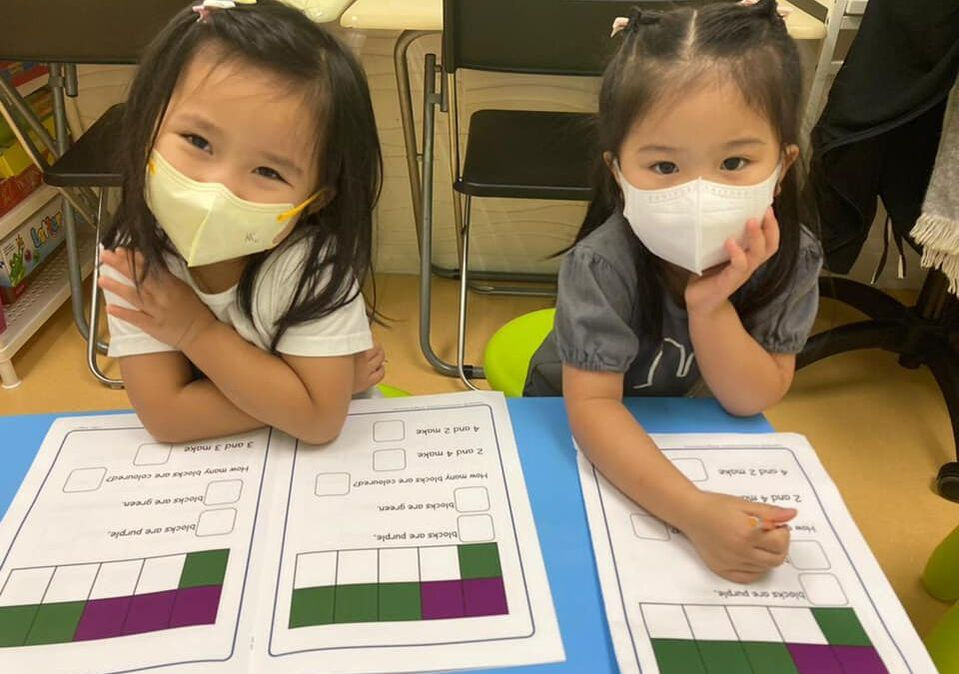Spoonfeeding: Leaves Too Much Potential On the Plate: Part 2
- Christy - Mentorhood Math

- Sep 5, 2021
- 4 min read

A Review: VGCC
Last week, we looked at how one method we favour at Mentorhood Math can help students move from understanding concepts with concrete representation to advancing into the abstract world of symbols and numbers we call mathematics.
The method we highlighted was VGCC: Visualization, Grouping, Connection, Calculation.
Using this method, we might model two-digit addition and subtraction questions on the fingers and hands of a few student participants. The advantage of using hands is that students can immediately Visualize how larger numbers are broken up into smaller parts using base five or base ten. (For example, students can see visually on the hands of their colleagues that eight is five plus three, and thirteen is five plus five plus three.)
This helps students move to the next stage of the method, known as Grouping. By concretely understanding how larger numbers can be broken down, students can group together easier parts of the numbers, and finally make the Connection between all these number groups to arrive at a final answer.
We then ask students to repeat this representation using numbers and symbols. Little do they know that they are building a three-dimensional understanding behind every two-dimensional number they are penciling onto their page.
Highlighting IMMC: Visualizing Numerical Interactions
This type of approach is known as the CPA approach: walking students through advancing levels of understanding math problems Concretely (using objects and manipulatives), Pictorially (using visuals), and Abstractly (using numbers and symbols), developing a robust intuition behind the digits we see on the surface of math. This method was first developed in Singapore and made popular in a number of countries known for their high-performing math students.
IMMC is another CPA method developed by Mentorhood Math, which focuses on helping students visualize how numbers interact with and relate to one another using comparisons.
IMMC stands for Imagery, More or Fewer, Model Fill-in, and Calculation. Under IMMC, a teacher will present a word problem in subtraction or addition and model out the components of the problem through Imagery,using visual rectangles. The key component of the method is the next step: More or Fewer. Students are asked to analyze the text for the key words that indicate what kind of operation is being performed. By doing this analysis, students are already building a connection between the model they are seeing, the text in the problem question, and the math that will need to be carried out.
When students answer, the next step is to fill in the Model, or label the rectangles and their differences in size, with the numbers from the question. This type of modelling can help students tackle simple problems, such as adding up how many apples Sally and her friend have all together. But it possesses a ton of power with all kinds of comparisons, and can be used to solve problems such as figuring out how much money James would have spent if he started with twice as much money as Casey, bought a shirt that was half as expensive as the one she bought, made a few other purchasing decisions, and had three times as much money left over.
Students have now done the legwork of breaking down the problem, and have a head start in seeing the problem come together by identifying key interactions and relationships between the numbers. Students can now advance to analyzing what Calculations need to be done, and in which order if there are several.
Students are embracing a highly intuitive way to solve these kinds of problems, encouraging the mental visuals that many of us might eventually stumble on naturally. They will be able to build on that intuition to mentally model how numbers interact with each other when given more complex sets of instructions.
We’re Vocal About the Hidden Benefits
As hinted, the golden nugget of this method lies in the second step: More or Fewer. Students are asked to analyze the text for clues that indicate which operations are being performed. We’ve already talked about how models can help students understand relationships between numbers visually, but by starting off in a word based problem, we are helping students understand numerical operations linguistically.
We talk in comparisons all the time: ratios, portions, percentages, doubles, halves, triples. We don’t always take the leap in our minds from vague comparisons to concrete math. Using IMMC and methods like it, we are helping students recognize math in everyday language.
Not only this, but especially in English, we represent a lot of operational concepts in many different ways. Just look at all the ways we can say “subtract” in English: minus, less than, take away, fewer…not to mention less-than-obvious ways that only make sense in context. (Three penguins walked away. How many are left?)
For students for whom English is already a fluent tongue, we are teaching them to think about their world mathematically: to take an instant leap between conversation and calculation, dialogue and operations. For students who are learning English, we are giving them an expanded, flexible vocabulary, enabling them to grasp the nuances of math spoken about in English.
Intuition, Intuition, Intuition
For a lot of the world, math is learned through repetition, repetition, repetition. At Mentorhood Canada, we believe in intuition, intuition, intuition. We believe in building a solid understanding of basic mathematical concepts that more advanced concepts can be built on later, saving students from having to be re-taught earlier concepts.
At Mentorhood, learning math can really be as simple as 1, 2, 3…so long as it’s spelled C, P, A.



Comments